RIJKSMUSEUM
In 1863 there was
a design contest for a new building for the Rijksmuseum, but none of the
submissions was considered to be of sufficient quality. Pierre Cuypers also
participated in the contest and his submission reached the second place. In 1876
a new contest was held and this time Pierre Cuypers won. The design was a
combination of gothic and renaissance elements. The construction began on
October 1, 1876. On
both the inside and the outside, the building was richly decorated with
references to Dutch art history. Another contest was held for these decorations.
The winners were B. van Hove and J.F. Vermeylen for the sculpture, G. Sturm for
the tile tableaux and paintings and W.F. Dixon for the stained glass. The museum
was opened at its new location on July 13, 1885.
|
The front
of the museum, as shown here on these aces of Clubs by Frommann &
Morian (Germany, around 1890) is located at the
Stadhouderskade,
but on the other side it has a prominent position on the Museumplein
(Museum square), nowadays among the Van Gogh Museum, the Municipal
Museum , and the Concert Hall. |
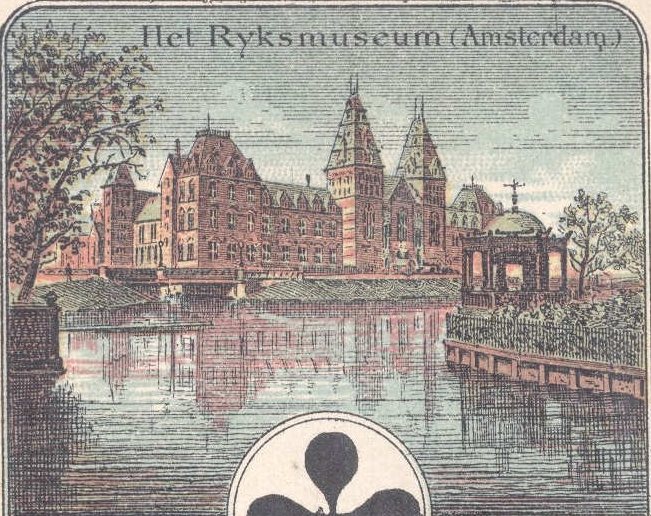
|
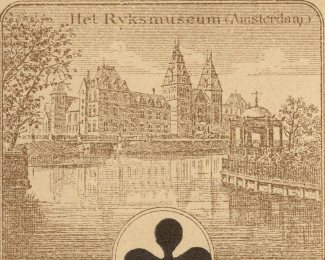 |
These aces show a side view on the front of the museum on
the Stadhouderkade. The view is taken from the Weteringsschans, on the opposite
side of the canal.
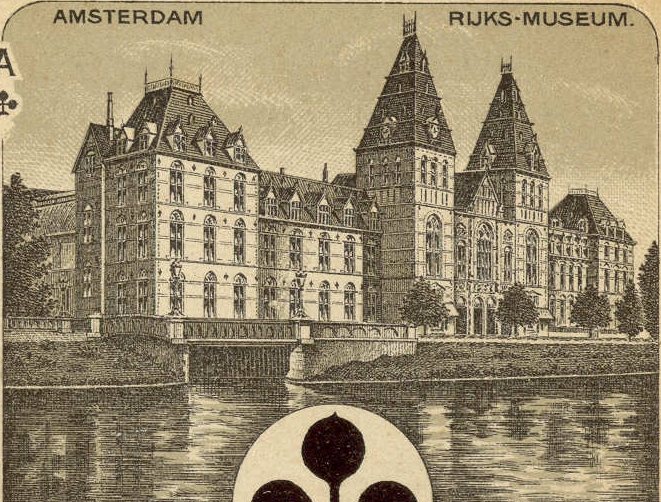 |
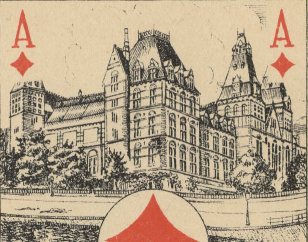 |
|
Ace by Mesmaekers, Belgium, ca.
1930.
Ace by Speelkaartenfabriek Nederland, ca 1915.
Ace by Rijnen Reclame, Netherlands,
2002 |
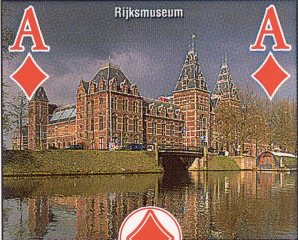 |
In 1890 a fragment
building was added to the Rijksmuseum. This building was made out of fragments
of demolished buildings that together give an overview of the Dutch history of
architecture. In 1906 the hall for the Night Watch was rebuilt. In the interior
more changes were made, between the 1920s and 1950s most multi-coloured wall
decorations were painted over. In the 1960s exposition rooms and several floors
were built into the two courtyards. The building had some minor renovations and
restorations in 1984, 1995–1996 and 2000. From 2003 until 2010 (or as late as
2013) the Rijksmuseum will be restored and renovated based on a design by
Spanish architects Antonio Cruz and Antonio Ortiz. Many of the old interior
decorations will be restored and the floors in the courtyards will be removed.
During the restoration and renovation process only a few paintings from the
permanent collection are on display in an exhibition called The Masterpieces in
the already renovated fragment building, nowadays called the Philips wing.
The following aces
all show a straight view on the front of the museum, seen from the
Weteringsschans, on the opposite side of the canal.
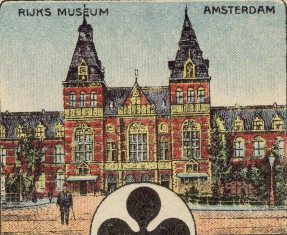 |
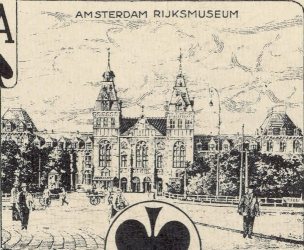
|
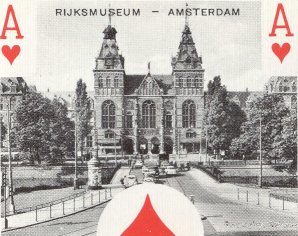 |
| Unknown, probably Dutch maker, ca.
1920. |
F. Piatnik, Austria, 1930's. |
Belgian maker, 1960's. |
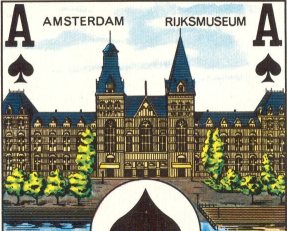 |
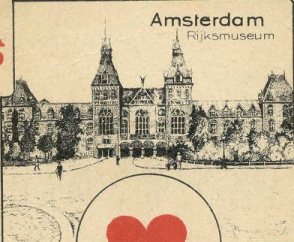
|
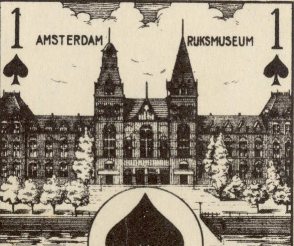
|
|
Carta Mundi, Belgium, from 1972 -
present day. |
VSS, Germany, ca. 1925. |
La Turnhoutoise, Belgium, 1950's. |
MAP










